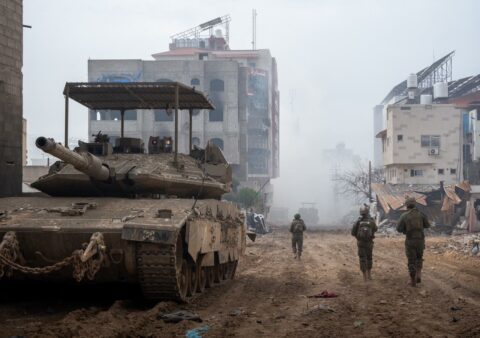Israel announced Tuesday it will reportedly permit more goods to enter Gaza through private-sector channels for the first time in nearly a year, a cautious step that could help alleviate a worsening hunger crisis in the territory while maintaining firm controls to prevent aid from reaching Hamas militants.
The Israeli military’s coordination unit, COGAT, said a limited number of approved local merchants will be allowed to bring in basic food items, baby food, produce, and hygiene supplies.
These goods must be purchased via monitored bank transfers designed to ensure funds do not benefit Hamas, which Israel continues to designate a terrorist organization.
The military did not specify the volume of goods that will be allowed, maintaining a measured approach in a volatile security environment.
COGAT spokesman noted that private-sector goods have been intermittently banned throughout the conflict and have not entered Gaza for almost a year.
The initial ban on all aid and goods in early March was intended to pressure Hamas after the militant group’s October 2023 attack on Israel.
Israel maintains that Hamas routinely diverts aid shipments to fund its war effort, a claim Hamas denies. United Nations agencies and other aid organizations report no evidence of systematic theft in their supply chains but acknowledge the challenge of operating under siege conditions.
Food and other essentials, including stockpiles accumulated during a brief cease-fire earlier this year, were running critically low by May.
Since then, aid has been funneled primarily through two channels: the Israel-backed Gaza Humanitarian Foundation, run by private American contractors, and a parallel U.N.-led system, which was supposed to replace it.
Yet, the volume of aid has remained well below pre-blockade levels, supplying only a fraction of what the United Nations says is necessary to feed Gaza’s population of more than two million.
By mid-July, local medical workers described the crisis as the worst hunger emergency the enclave has faced since the conflict began.
In response, Israel has recently taken steps to ease aid delivery, resuming airdrops, temporarily pausing military operations in certain areas, and establishing humanitarian corridors.
The number of aid trucks entering Gaza daily through land routes—including from Jordan and Egypt—has increased.
While U.N. officials and aid groups welcomed these measures, they caution that conditions on the ground remain dire. They stress that significantly higher volumes of both humanitarian aid and commercial goods are needed to stabilize Gaza.
Israeli officials report improvements since scaling up aid efforts but acknowledge challenges: malnutrition rates remain high, and food scarcity has fueled disorder, with desperate crowds and some criminal elements gathering around aid convoys. The U.N. reports that most food trucks are looted before reaching their destinations.
Palestinian health authorities say more than 1,500 Gazans have died seeking aid. Israel’s military has acknowledged troops sometimes fired toward crowds but disputes claims that fatalities are as high as reported.
The U.N. humanitarian agency OCHA said Monday that “conditions on the ground remain largely unchanged” and that “aid that has entered remains by far insufficient for the starving population,” adding that convoys “continue to face impediments on their way to delivering aid.”
Israel’s cautious reopening of private-sector trade routes balances the urgent humanitarian needs in Gaza with the imperative to prevent Hamas from exploiting aid, a delicate but necessary step toward managing a complex crisis.
[READ MORE: Cambodian Prime Minister Nominates Trump for Nobel Peace Prize After Brokered Ceasefire in Southeast Asia]









